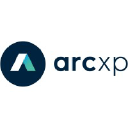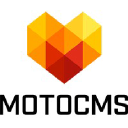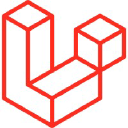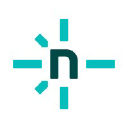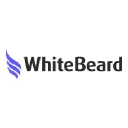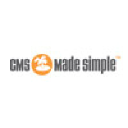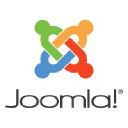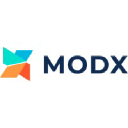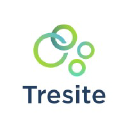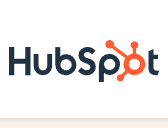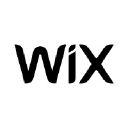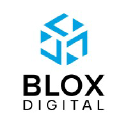
Umbraco
Umbraco Content Management System (CMS)
Umbraco is an open-source content management system (CMS) built on the Microsoft .NET platform. It is designed to help users create, manage, and publish content on the web.
Key Features
- User-friendly interface for content editors
- Flexible and extensible architecture
- Multilingual support
- Customizable templates and designs
- Built-in media library for managing images, videos, and files
- SEO-friendly URLs and metadata management
- Workflow and approval processes for content publishing
- Integration with third-party tools and services
Pricing Plans
| Plan | Price | Features |
|---|---|---|
| Umbraco CMS | Free | Open-source version with core CMS features |
| Umbraco CMS Pro | €419/year | Additional features, support, and updates |
| Umbraco Cloud | From €48/month | Managed hosting, automated updates, and deployment |
Community and Support
Umbraco has a large and active community of developers and users who contribute to the platform's development, share knowledge, and provide support. The community resources include:
- Documentation and tutorials
- Forums and discussion boards
- Community packages and extensions
- Umbraco events and conferences
Umbraco also offers commercial support options for users who require additional assistance or priority support.
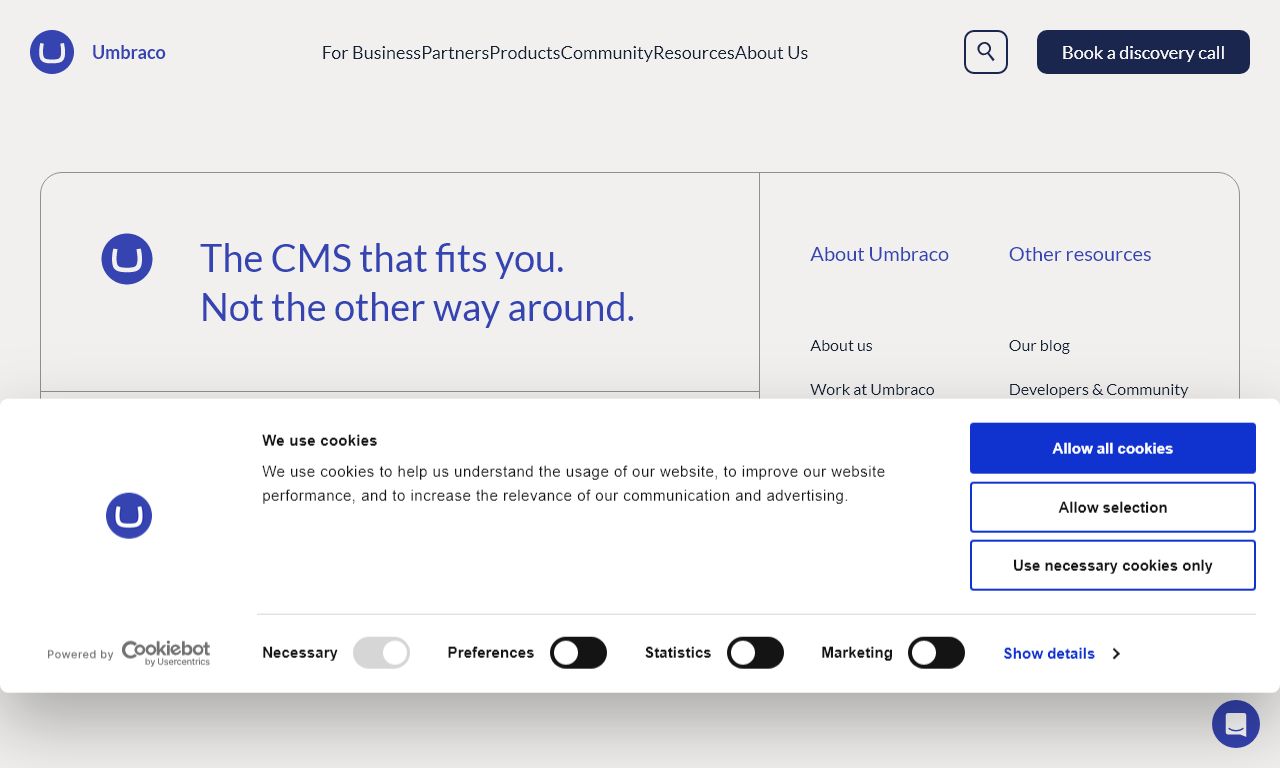
Umbraco
Umbraco, a popular open-source content management system (CMS), offers a flexible and user-friendly solution for websites of all sizes.
In this review, we'll explore Umbraco's features, capabilities, and overall performance to help you determine if it's the right CMS for your needs.
1. Overview and purpose of the CMS
Umbraco is a flexible, open-source CMS built on the .NET framework, designed to provide a powerful and customizable platform for creating and managing websites.
It caters to a wide range of users, from small businesses to large enterprises, offering scalability and versatility.
With over 500,000 active installations worldwide, Umbraco has established itself as a reliable choice for content management.
2. User interface and ease of use
Umbraco boasts a clean, intuitive interface that prioritizes simplicity and efficiency for content editors and developers alike.
The back-office dashboard provides a centralized hub for managing all aspects of your website.
New users can quickly adapt to the system, thanks to its logical layout and user-friendly design.
3. Content creation and editing tools
Umbraco offers a robust set of content creation and editing tools, including a WYSIWYG editor and support for various content types.
The platform's grid layout system allows for flexible content structuring and easy management of complex page layouts.
Content editors can leverage features like inline editing and content scheduling to streamline their workflow.
4. Asset management capabilities
Umbraco's Media Library provides a centralized location for managing and organizing all digital assets, including images, videos, and documents.
The system supports drag-and-drop functionality for easy file uploads and management.
Users can also take advantage of built-in image cropping and resizing tools to optimize media for different contexts.
5. Customization and extensibility options
As an open-source platform, Umbraco offers extensive customization options through its flexible architecture and package ecosystem.
Developers can create custom document types, data types, and templates to tailor the CMS to specific project requirements.
The Umbraco Package Repository hosts a wide array of community-created extensions to enhance functionality.
6. SEO features and optimization tools
Umbraco provides built-in SEO tools to help improve website visibility and search engine rankings.
Features include customizable meta tags, URL management, and XML sitemap generation.
The platform also supports the creation of 301 redirects and allows for easy implementation of schema markup.
7. Security measures and user management
Umbraco prioritizes security with features such as role-based access control and two-factor authentication.
The CMS regularly releases security updates and follows best practices to protect against common vulnerabilities.
User management is straightforward, allowing administrators to create and manage user accounts with granular permissions.
8. Performance and scalability
Built on the .NET framework, Umbraco offers excellent performance and scalability for websites of all sizes.
The platform supports caching mechanisms and content delivery networks (CDNs) to optimize load times and handle high traffic volumes.
Umbraco Cloud, the managed hosting solution, provides automatic scaling and load balancing for enterprise-level projects.
9. Integration with third-party tools and services
Umbraco offers seamless integration with various third-party tools and services through its API and extension ecosystem.
Popular integrations include:
- Google Analytics
- Mailchimp
- Salesforce
- Payment gateways
The platform's flexibility allows developers to create custom integrations as needed.
10. Pricing and support options
Umbraco offers a range of pricing options to suit different needs and budgets:
| Plan | Price | Features |
|---|---|---|
| Community | Free | Open-source, self-hosted |
| Cloud | From $30/month | Managed hosting, automatic updates |
| Enterprise | Custom pricing |
11. Mobile responsiveness and multi-device support
Umbraco prioritizes mobile responsiveness and multi-device support to ensure optimal user experience across all platforms.
The CMS offers responsive design templates and grid layouts that automatically adapt to different screen sizes.
Developers can leverage Umbraco's flexible architecture to create custom mobile-friendly designs and functionality.
12. Multilingual capabilities and localization features
Umbraco provides robust multilingual and localization features to support global websites and diverse audiences.
The platform's built-in translation management system allows for easy creation and maintenance of multilingual content.
Users can set up language variants for each page and manage translations through a user-friendly interface.
13. Workflow management and collaboration tools
Umbraco offers comprehensive workflow management and collaboration tools to streamline content creation and approval processes.
Features include content staging, approval workflows, and task assignment capabilities.
The platform's user roles and permissions system enables efficient team collaboration and content management.
14. Version control and content revision history
Umbraco provides robust version control and content revision history features to ensure data integrity and facilitate content management.
The CMS maintains a complete revision history for all content, allowing users to revert to previous versions if needed.
Administrators can easily compare different versions of content and track changes over time.
15. Analytics and reporting functionalities
Umbraco offers built-in analytics and reporting functionalities to help users track website performance and user behavior.
The platform integrates seamlessly with popular analytics tools like Google Analytics for in-depth data analysis.
Users can create custom dashboards and reports to visualize key performance indicators and track content engagement.
16. E-commerce capabilities
While Umbraco doesn't offer native e-commerce functionality, it can be extended to support online stores through third-party integrations.
Popular e-commerce solutions for Umbraco include Vendr and uCommerce.
These integrations provide features such as product management, shopping carts, and payment processing capabilities.
17. Compliance with accessibility standards
Umbraco is committed to ensuring accessibility compliance, supporting the creation of websites that adhere to WCAG guidelines.
The CMS provides tools and features to help developers implement accessible design patterns and content structures.
Umbraco's flexibility allows for easy implementation of accessibility enhancements and customizations.
18. Documentation and learning resources
Umbraco offers extensive documentation and learning resources to support users at all skill levels.
The official Umbraco Documentation provides comprehensive guides, tutorials, and API references.
Additional resources include video tutorials, webinars, and the Umbraco TV platform for in-depth learning.
19. Community support and ecosystem
Umbraco boasts a vibrant and active community, providing valuable support and resources for users and developers.
The Our Umbraco platform serves as a hub for community discussions, package sharing, and knowledge exchange.
Regular community events and meetups foster collaboration and innovation within the Umbraco ecosystem.
20. Migration tools and processes from other platforms
Umbraco provides tools and guidance to facilitate migration from other CMS platforms.
The Umbraco Migration Tool supports migrations from popular CMSs like WordPress and Drupal.
Developers can also leverage Umbraco's flexible architecture to create custom migration scripts for specific use cases.
In conclusion, Umbraco offers a powerful and versatile content management solution that caters to a wide range of website needs, from small businesses to large enterprises.
With its user-friendly interface, extensive customization options, and strong community support, Umbraco stands out as a robust choice for organizations seeking a flexible and scalable CMS.
As the platform continues to evolve and improve, it remains a top contender in the competitive landscape of content management systems.
Website:






